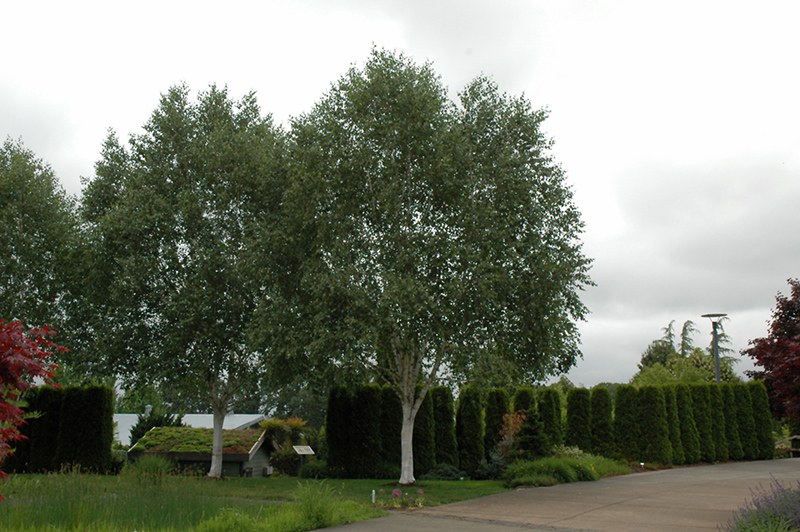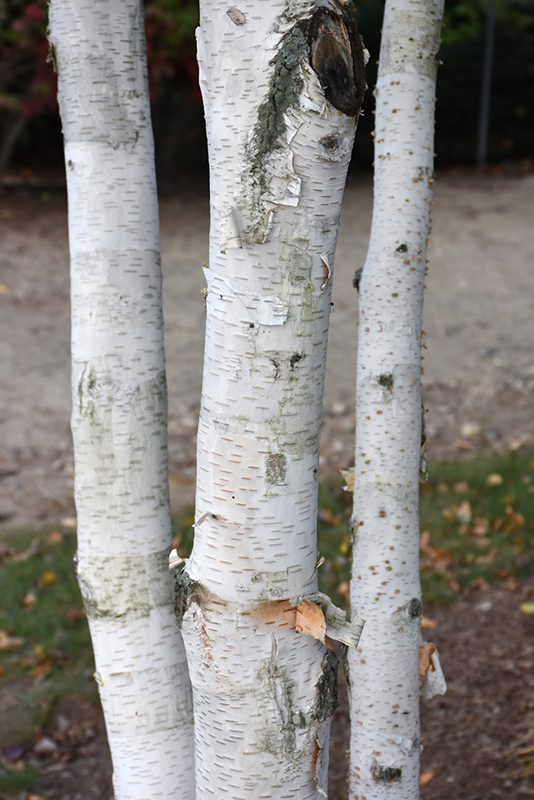Whitebark Himalayan Birch*
Betula utilis 'var. jacquemontii'
* This is a "special order" plant - contact store for details
Height: 30 feet
Spread: 25 feet
Sunlight:
![]()
![]()
Hardiness Zone: 5a
Other Names: White Bark Birch
Description:
A rare and ornamental birch tree with smooth, unbelievably white bark, a shapely habit of growth and good fall color; susceptible to insect attacks, somewhat particular about growing conditions; a spectacular accent tree for the right locations
Ornamental Features
Whitebark Himalayan Birch is primarily valued in the landscape for its decidedly oval form. It has dark green deciduous foliage. The pointy leaves turn an outstanding yellow in the fall. The smooth white bark is extremely showy and adds significant winter interest.
Landscape Attributes
Whitebark Himalayan Birch is a deciduous tree with a strong central leader and a shapely oval form. Its relatively fine texture sets it apart from other landscape plants with less refined foliage.
This tree will require occasional maintenance and upkeep, and should only be pruned in summer after the leaves have fully developed, as it may 'bleed' sap if pruned in late winter or early spring. Gardeners should be aware of the following characteristic(s) that may warrant special consideration;
- Insects
Whitebark Himalayan Birch is recommended for the following landscape applications;
- Accent
- Shade
Planting & Growing
Whitebark Himalayan Birch will grow to be about 30 feet tall at maturity, with a spread of 25 feet. It has a low canopy with a typical clearance of 4 feet from the ground, and should not be planted underneath power lines. It grows at a medium rate, and under ideal conditions can be expected to live for 60 years or more.
This tree does best in full sun to partial shade. It prefers to grow in average to moist conditions, and shouldn't be allowed to dry out. It is not particular as to soil type, but has a definite preference for acidic soils, and is subject to chlorosis (yellowing) of the foliage in alkaline soils. It is somewhat tolerant of urban pollution. Consider applying a thick mulch around the root zone in winter to protect it in exposed locations or colder microclimates. This is a selected variety of a species not originally from North America.
* This is a "special order" plant - contact store for details


